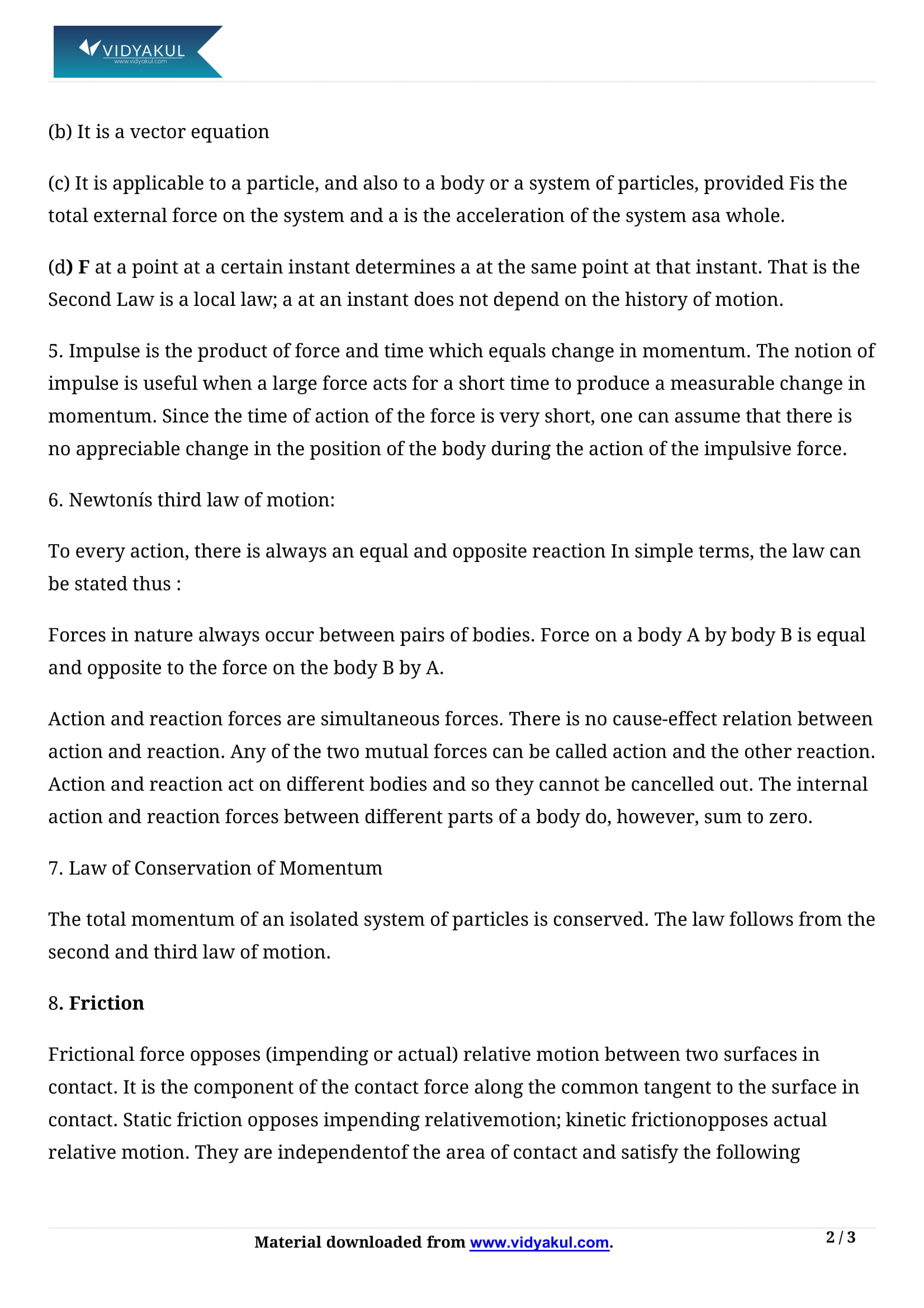Class 11 Physics Chapter 5 Law of Motion Notes

Chapter 5 Law of Motion
Chapter 5 of Physics for Grade 11 is "The Laws of Motion". This chapter mainly explains how and why external forces act on moving bodies. The NCERT notes for Physics Class 11 is an invaluable resource that students can rely on to get the best marks on their exams. These NCERT notes are designed according to the latest CBSE guidelines.
CBSE Class 11 Physics Chapter 5 discusses forces, the introduction of force and inertia, the conservation of momentum, and circular motion. This article provides NCERT notes for Grade 11, Chapter 5, Physics, and Important Subjects. Scroll down to learn more!
CBSE CLASS 11th PHYSICS CH-5
Points to Remember
Below we have provided some of the important points to remember from NCERT Class 11 Physics Chapter 5:
Newton’s First Law of Motion: According to Newton’s first law of motion, everybody continues to be in its state of rest or of uniform motion in a straight line unless compelled by some external force to act otherwise.
Newton’s Second Law of Motion: According to Newton’s second law of motion, the rate of change of momentum of a body is directly proportional to the applied force and takes place in the direction in which the force acts.
Law of Conservation of Linear Momentum: According to law of conservation of linear momentum, the total momentum of an isolated system of interacting particles is conserved.
Weighing Machine: A weighing machine does not measure the weight but measures the force exerted by object on its upper surface.
Sprint Balance: Spring balance does not measure the weight. It measures the force exerted by the object at the hook.
Topics and Sub-topics
The topics discussed in Chapter 5, Year 11 of NCERT Physics are often regarded as milestones in human history and foundations of modern physics. In this chapter, students will learn about Newton's laws of motion, vector sums of forces, conservation of linear momentum, scalars and vectors, and the fundamental forces of nature. Although this chapter is considered difficult, Vidyakul's 3D videos allow students to see the law. in action.
So, students can practice questions and take free exams here. Additionally, students should focus on the NCERT notes that benefit them.
Let us look at the topics that students are going to study in this chapter:
Few Important Questions
What is ‘Inertia’?
Inertia is a property of matter by which it remains at rest or in motion in the same straight line unless acted upon by some external force.
What are some of the uses of ‘Force’ in real life?
1. Weight things 2. Force of bat on a ball
Why is the third law of motion important?
This law is important in analysing problems of static equilibrium, where all forces are balanced.
Practice Questions
What is Inertia?
What is Force?
What are Newton’s Laws of Motion?
Newton’s First Law of Motion: According to Newton’s first law of motion, everybody continues to be in its state of rest or of uniform motion in a straight line unless compelled by some external force to act otherwise.
Newton’s Second Law of Motion: According to Newton’s second law of motion, the rate of change of momentum of a body is directly proportional to the applied force and takes place in the direction in which the force acts.
Law of Conservation of Linear Momentum: According to law of conservation of linear momentum, the total momentum of an isolated system of interacting particles is conserved.
Weighing Machine: A weighing machine does not measure the weight but measures the force exerted by object on its upper surface.
Sprint Balance: Spring balance does not measure the weight. It measures the force exerted by the object at the hook.
What is ‘Inertia’?
What are some of the uses of ‘Force’ in real life?
Why is the third law of motion important?
What is Inertia?
What is Force?
What are Newton’s Laws of Motion?
Learn more about in Class 11 Physics Chapter 5 Law of Motion Notes pdf.
Download this solution for FREE Download this PDF






